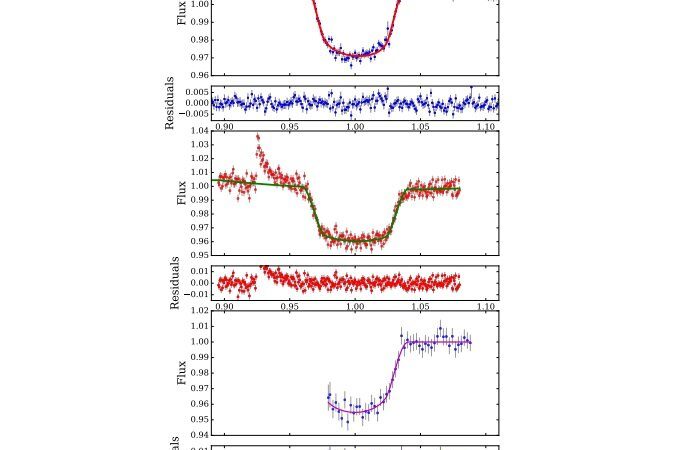An international team of astronomers has detected a new brown dwarf with an ultra-short orbital period that transits an active M-dwarf star. The newfound object, designated NGTS-7Ab, turns out to be the shortest period transiting brown dwarf around a main or pre-main sequence star discovered to date. The finding is detailed in a paper published June 19 on the arXiv pre-print server.
Source: Phys.org
Brown dwarfs are intermediate objects between planets and stars, occupying the mass range between 13 and 80 Jupiter masses. Although many brown dwarfs have been detected to date, such objects orbiting other stars are a rare find.
Now, a group of astronomers led by James A.G. Jackman of University of Warwick, UK, reports the finding of new rare brown dwarf in the binary system NGTS-7AB. The system, located about 500 light years away, consists of two M-dwarf stars. The newly detected brown dwarf orbits the primary star known as NGTS-7A and therefore received designation NGTS-7Ab.
The discovery occurred during the Next Generation Transit Survey (NGTS), a ground-based robotic search for exoplanets. The brown dwarf nature of the new object was confirmed by follow-up observations.
“We have reported the discovery of NGTS-7Ab, a high mass transiting brown dwarf orbiting an M-star with an orbital period of 16.2 hours,” the astronomers wrote in the paper.
According to the study, the discovery is significant due to the very short orbital period of the newly found object and its relatively high mass. NGTS-7Ab represents the so-called “brown dwarf desert,” describing the paucity of massive brown dwarfs (with masses greater than 35 Jupiter masses) orbiting their hosts at a relatively close distance (less than 3.0 AU).
NGTS-7Ab was found to orbit its parent star at a separation of around 0.014 AU, and its mass is assumed to be around 75.5 Jupiter masses, which makes it one of the most massive objects of this type detected to date. The radius of this object is estimated at approximately 1.38 Jupiter radii.
Moreover, NGTS-7Ab is the shortest period transiting brown dwarf around a pre-main or main sequence star so far discovered, and only the fifth brown dwarf transiting an M-star host.
Summing up the results, the researchers also try to explain the ultra-short orbital period of NGTS-7Ab, noting that the M-dwarf companion could be responsible for this.
“We believe NGTS-7Ab is part of a hierarchical triple system and the presence of NGTS-7B may have had a role in moving the brown dwarf into its close orbit via the Kozai-Lidov mechanism and tidal circularisation,” the authors of the paper concluded.
They added that the orbit of NGTS-7Ab will most likely decay within about 5 to 10 million years due to a combination of tidal synchronisation and magnetic braking.

































Leave a Comment
You must be logged in to post a comment.